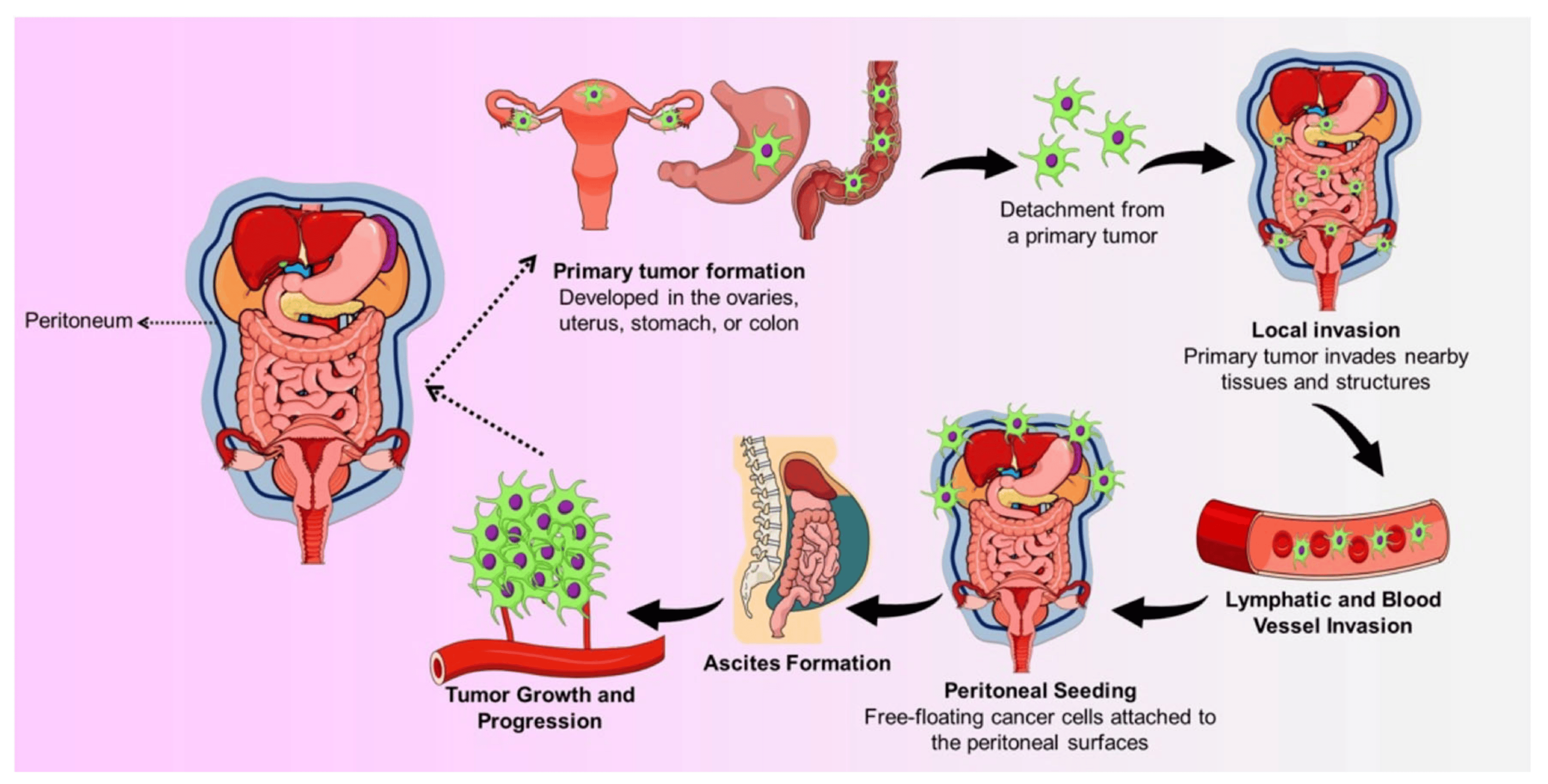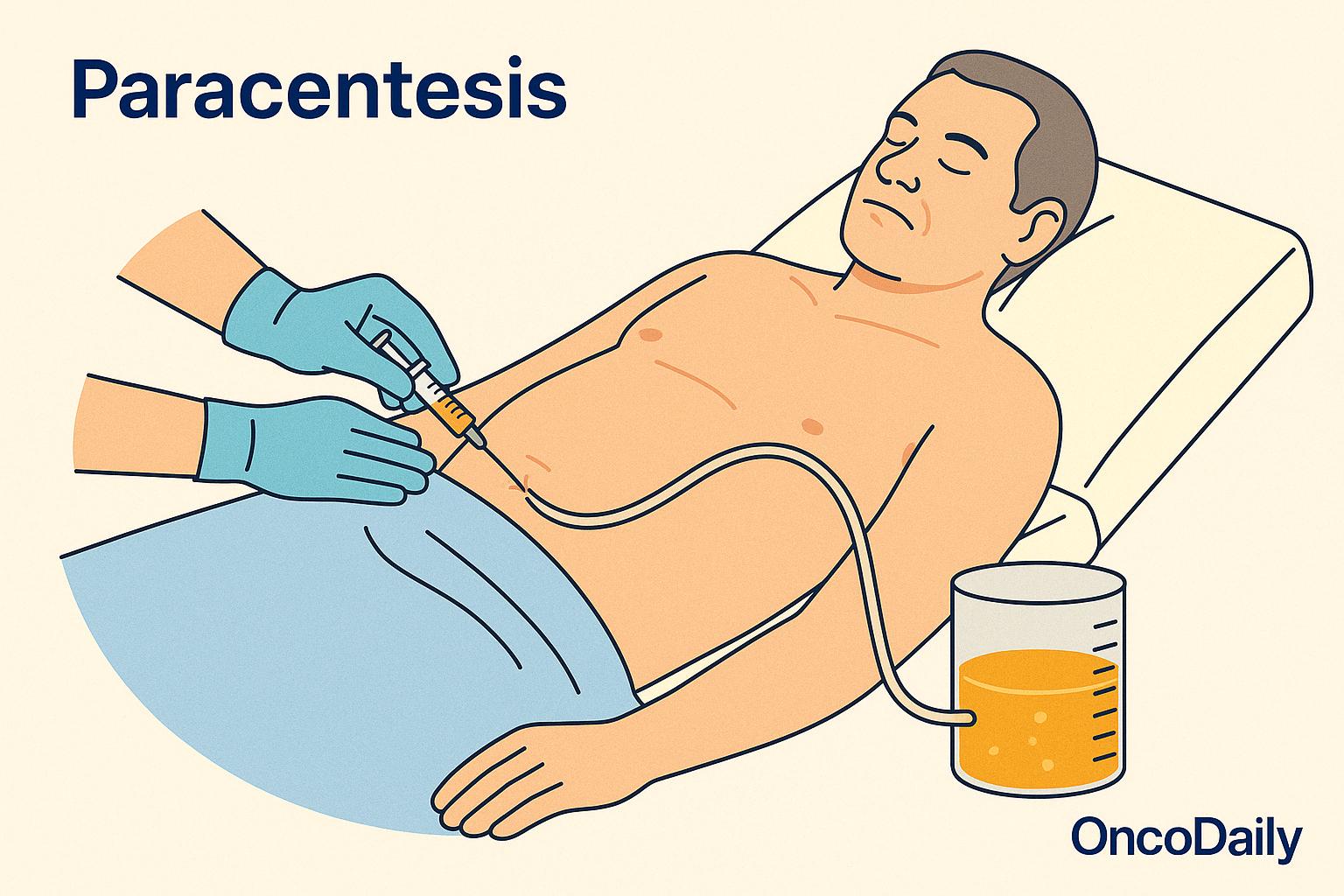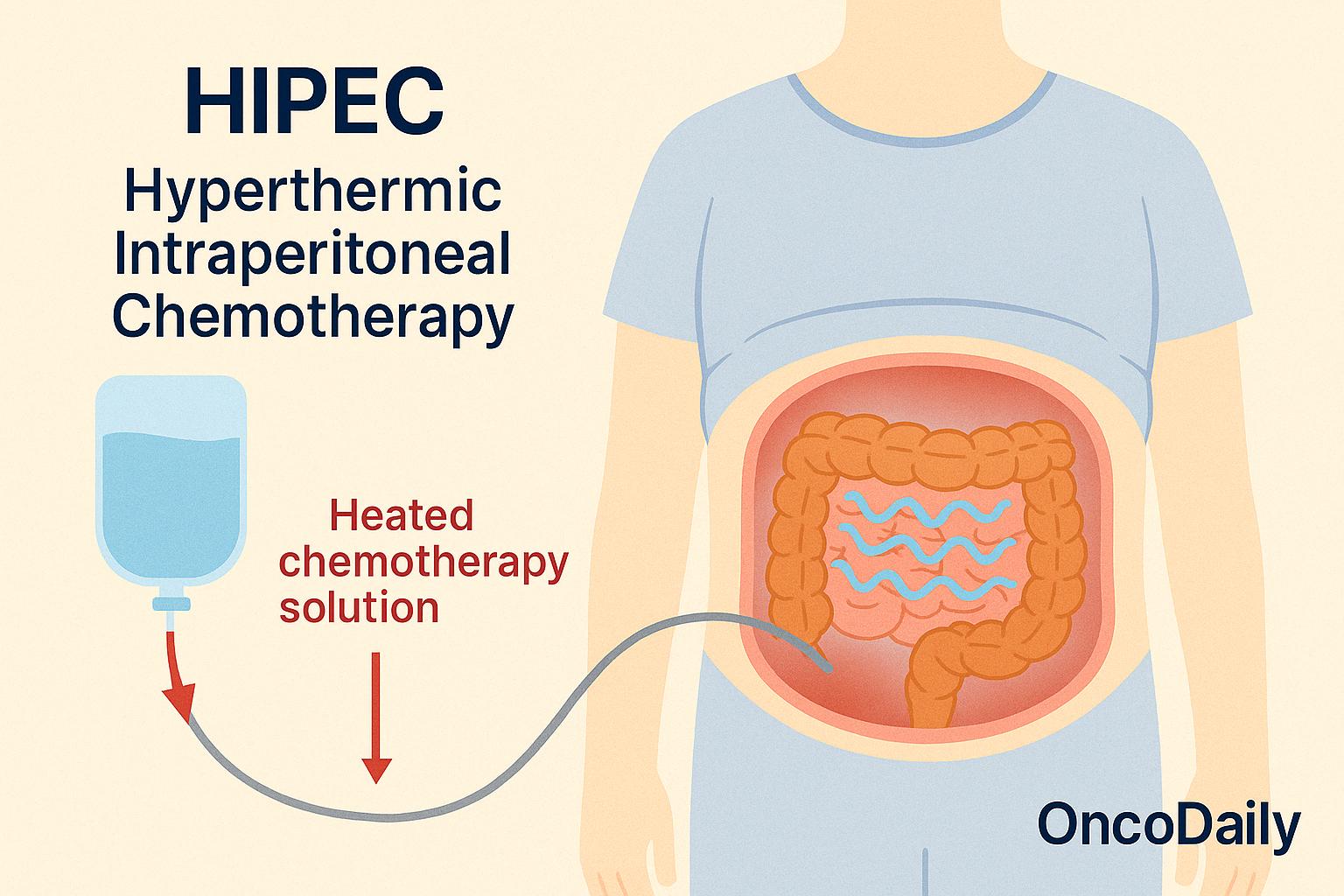
Carcinomatosis: What It Is, Why It Happens, and How It’s Treated
Carcinomatosis is a medical term used when cancer has spread widely within a body cavity, most often the abdomen (called peritoneal carcinomatosis). This happens when cancer cells break away from the original tumor (called the primary tumor) and begin to grow on the surfaces of organs or the lining of the body cavity.
Although the word “carcinomatosis” can sound scary, it’s important to know that doctors have many tools to help manage it, and treatment is possible. This article will help you understand what carcinomatosis is, how it’s diagnosed, what symptoms to look for, and what treatment options are available.
What Causes Carcinomatosis?
Cancer begins when a group of cells in one part of the body starts to grow uncontrollably. These cells can eventually break away from the primary tumor and travel to other areas. In carcinomatosis, these cells move into body cavities, which are spaces in the body that are lined by thin, slippery membranes and filled with a small amount of fluid that helps organs move smoothly. Some cancers are more likely than others to spread in this way. These include:
-
Ovarian cancer – which often spreads to the peritoneum early on
-
Stomach (gastric) cancer
-
Colon and rectal cancer
-
Appendix cancer, especially a type called pseudomyxoma peritonei
-
Pancreatic cancer
-
Breast and lung cancer, in cases of pleural spread
When cancer cells break away from their original tumor and reach the lining of a body cavity, such as the abdomen or chest, they don’t just float aimlessly. These cells can attach to the surface of the lining, settle in, and begin to grow once again. Over time, they form many small tumor nodules that spread across the surface. This pattern of spread is what doctors refer to as carcinomatosis. Unlike other types of cancer spread that may form one or two large tumors in distant organs like the liver or lungs, carcinomatosis tends to appear as numerous, scattered spots, often covering large areas of the cavity lining.

Whether or not a particular cancer leads to carcinomatosis depends on several factors. One important factor is the type and aggressiveness of the cancer. Some cancers—such as ovarian, stomach, or appendix cancer—are more likely to spread in this way. Another factor is the ability of cancer cells to break off from the primary tumor and survive in the fluid found in body cavities. This environment can be harsh, and only certain cancer cells have the traits needed to travel, survive, and grow elsewhere. The local immune response also plays a role. If the immune system inside the cavity is weakened or unable to recognize the cancer cells as dangerous, it may allow them to grow more easily. Finally, the amount of time before the cancer is diagnosed or treated matters too. The longer cancer is left untreated, the more time it has to spread and settle along the lining.
Although carcinomatosis often means that the cancer is at an advanced stage, it’s important to remember that advanced doesn’t always mean hopeless. Thanks to ongoing research and new treatment options, doctors today are better equipped than ever to slow down the disease, ease symptoms, and improve quality of life for patients facing this diagnosis.
How Does Carcinomatosis Develop in the Body?
Carcinomatosis begins when cancer cells break away from the original tumor and find their way into a body cavity, such as the abdomen or chest. These cavities naturally contain small amounts of fluid—peritoneal fluid in the abdomen and pleural fluid in the chest—that help organs move and function smoothly. Once inside these fluid-filled spaces, the cancer cells can float freely, like tiny seeds drifting in water.
This process is often referred to as “seeding”, because it resembles the way plant seeds might spread through the wind or water and settle in new soil. In this case, the “soil” is the lining of the organs and body cavity—such as the intestines, liver, bladder, diaphragm, or the chest wall. Once the cancer cells attach to these surfaces, they begin to grow and multiply, forming many small tumor deposits in different locations. Over time, this pattern of spread can:
-
Cover large areas inside the body, affecting multiple organs
-
Cause the body to produce extra fluid, leading to ascites in the abdomen (swelling due to fluid buildup) or pleural effusion in the chest (fluid around the lungs)
-
Interfere with how organs work—for example, tumors on the intestines may affect digestion or bowel movements, and fluid in the chest may make breathing more difficult
Unlike a single tumor lump, carcinomatosis usually leads to a diffuse or scattered pattern of disease, where many small cancer spots are spread across surfaces rather than gathered in one area. This widespread involvement can make treatment more complex, but knowing how it develops helps doctors plan better ways to manage it, whether through medication, surgery, or symptom relief.
Clinical Manifestations: What Are the Symptoms?
The symptoms of carcinomatosis can vary quite a bit depending on where in the body the cancer has spread, how far it has advanced, and which organs are being affected. In most cases, the signs don’t appear suddenly. Instead, they tend to develop gradually over time, often starting with vague discomfort that becomes more noticeable as the disease progresses.
When carcinomatosis affects the abdomen—a condition known as peritoneal carcinomatosis—one of the most common symptoms is abdominal swelling or bloating. This is often due to the build-up of fluid in the belly, a condition called ascites. Patients may notice that their stomach feels full or tight, even if they haven’t eaten much. Clothes may suddenly feel tighter around the waist. As fluid accumulates or tumor spots grow, some people experience abdominal pain or cramping, especially after meals. Another common symptom is early satiety, meaning the person feels full quickly after starting to eat. This can lead to reduced appetite and unintentional weight loss. As the cancer interferes with digestion, some people may also develop nausea, vomiting, constipation, or diarrhea. Over time, it can become harder to absorb nutrients properly, which may contribute to fatigue, weakness, and a general sense of feeling unwell.
In cases where carcinomatosis occurs in the chest, such as with pleural carcinomatosis, symptoms often relate to the lungs. The buildup of fluid around the lungs (pleural effusion) can cause shortness of breath, especially during physical activity or when lying flat. Patients may also experience chest discomfort, coughing, or a feeling of tightness in the chest. It’s important to note that some people may have no obvious symptoms at first, and carcinomatosis may only be discovered during scans or procedures done for another reason. For others, the symptoms can have a big impact on daily life, making even small tasks feel exhausting.
Because many of these signs—like bloating, fatigue, or appetite changes—can overlap with other, more common conditions, it’s crucial to talk to a doctor if these symptoms persist or worsen over time. An early and accurate diagnosis can make a big difference in managing symptoms and improving overall well-being.
Diagnosis: How Is Carcinomatosis Identified?
Carcinomatosis can be challenging to detect in its early stages because the symptoms often develop slowly and can be mistaken for other, less serious conditions. For many patients, a diagnosis is only made after ongoing symptoms—such as abdominal bloating, weight loss, or fatigue—lead to further investigation. In some cases, carcinomatosis is discovered unexpectedly during surgery or imaging done for another reason.
Doctors use a combination of clinical evaluation, imaging tests, and sometimes tissue sampling to confirm the presence of carcinomatosis and to understand how far it has spread. One of the first steps often involves imaging studies:
-
A CT (computed tomography) scan is one of the most commonly used tools. It provides detailed images of the inside of the body and can reveal small tumor deposits, fluid buildup (like ascites), or thickening of the lining (peritoneum or pleura). CT scans are especially helpful in spotting the scattered, patchy spread that’s typical of carcinomatosis.
-
An MRI (magnetic resonance imaging) may also be used, particularly when even more detailed views are needed of soft tissues or specific organs. In some cases, especially for certain types of cancer, MRI can detect tumors that a CT scan might miss.
-
Occasionally, a PET scan (positron emission tomography) is used. This test shows areas of increased metabolic activity in the body, which can point to active tumor growth. PET scans are helpful for assessing the overall spread of disease or planning treatment.

Sometimes, when doctors suspect carcinomatosis, one of the first signs they notice is a buildup of fluid—either in the abdomen or the chest. To investigate this further, they may perform a procedure to collect a small sample of that fluid. If the fluid is in the abdomen, the procedure is called a paracentesis, where a thin needle is gently inserted through the skin to remove some of the fluid, known as ascites. If the fluid is around the lungs, the procedure is called a thoracentesis, and it involves drawing fluid from the chest area. Once collected, the fluid is sent to the laboratory, where specialists examine it under a microscope to look for cancer cells. If cancer cells are found, it helps confirm the diagnosis of carcinomatosis. However, it’s important to know that a negative result doesn’t always rule it out—sometimes cancer may still be present even if it doesn’t show up in the fluid sample.
To get more accurate information, doctors may recommend a biopsy—a procedure where a small piece of tissue is removed and examined. In some cases, this can be done using image-guided techniques, where a scan helps guide the needle directly to the area of concern. Other times, a doctor may perform a laparoscopy, which is a minimally invasive surgery. During this procedure, a small camera is inserted through a tiny incision in the abdomen. This allows the doctor to see the inside of the abdominal cavity and take tissue samples from any suspicious areas. Laparoscopy not only helps with diagnosis but also gives the medical team a better idea of how much the cancer has spread. After gathering all the necessary information from imaging, fluid analysis, and biopsies, the medical team will determine how far the cancer has progressed—a process known as staging. Understanding the stage of the disease is a key part of choosing the right treatment and setting realistic goals for care.
Receiving a diagnosis like carcinomatosis can be emotionally overwhelming, and it’s completely normal to feel afraid or uncertain. But it’s also important to remember that getting a clear and accurate diagnosis is a critical first step toward building a care plan. Thanks to modern medical tools and technology, doctors today are better equipped than ever to identify this condition and begin helping patients sooner—with treatments tailored to their specific needs.
Treatment Options: How Is Carcinomatosis Treated?
When it comes to treating carcinomatosis, there is no one-size-fits-all solution. The choice of treatment depends on several key factors, including the type of primary cancer that caused the spread, how far the disease has advanced, and the patient’s overall health and personal goals. In some cases, the focus is on slowing the growth of cancer and extending life. In others, the primary goal is to relieve symptoms and improve quality of life.
One of the most commonly used approaches is systemic chemotherapy—medications that circulate through the bloodstream and reach cancer cells throughout the body. This can help reduce the size of tumor deposits, ease symptoms like pain or fluid buildup, and sometimes prolong survival. The exact type of chemotherapy depends on the primary cancer, such as colon, gastric, or ovarian cancer, and the medical team closely monitors how well the treatment is working. For some cancers, targeted therapies or immunotherapy may be an option. Targeted therapies work by blocking specific molecules that cancer cells need to grow. Immunotherapy, on the other hand, boosts the body’s immune system so it can recognize and attack cancer cells more effectively. These treatments are especially promising in cancers with certain genetic features, and doctors may run specialized tests to determine if a patient is eligible.

In certain situations—particularly with colorectal or appendix cancer—patients may be candidates for a combined procedure involving cytoreductive surgery followed by HIPEC (Hyperthermic Intraperitoneal Chemotherapy). First, surgeons remove all visible tumors from the abdomen. Then, while the patient is still in surgery, a heated chemotherapy solution is circulated through the abdominal cavity. The heat helps the drugs work better, and because the treatment is localized, it may cause fewer side effects than standard chemotherapy. Although it’s an intensive procedure, for carefully selected patients, this approach has led to longer survival and better disease control. Even when a cure is not possible, there are still many ways to support comfort and quality of life. Palliative treatmentsfocus on relieving symptoms such as pain, nausea, or breathing difficulties. For example, if fluid builds up in the abdomen or chest, doctors can perform procedures like paracentesis or thoracentesis to drain it and ease pressure. Nutritional support, anti-nausea medications, and pain management are all part of this approach. Emotional and psychological support also plays an important role, helping patients and families cope with the challenges of illness.
Finally, clinical trials may be available for patients with carcinomatosis. These research studies offer access to new and experimental treatments, including advanced forms of immunotherapy, targeted drugs, or novel delivery systems. Participating in a clinical trial can be a way to explore additional options and contribute to the development of future cancer therapies. While a diagnosis of carcinomatosis often means that the cancer is in an advanced stage, it does not mean that there is nothing that can be done. Many treatments can help control the disease, ease symptoms, and provide meaningful time with improved comfort and dignity. With ongoing advances in medical science, patients today have more hope and more choices than ever before.
You Can Watch More on OncoDaily Youtube TV
Written by Toma Oganezova, MD
FAQ
What is carcinomatosis and how is it different from regular cancer metastasis?
Carcinomatosis refers to the widespread seeding of cancer cells within a body cavity, such as the abdomen or chest, rather than forming isolated tumors in distant organs like the liver or lungs.
Which cancers are most likely to cause peritoneal carcinomatosis?
Cancers like ovarian, gastric (stomach), colorectal, appendix (especially pseudomyxoma peritonei), and pancreatic cancers are commonly associated with peritoneal carcinomatosis.
What are the early symptoms of carcinomatosis?
Early signs may include abdominal bloating, pain, early satiety, fatigue, unexplained weight loss, or shortness of breath (if in the chest cavity). Symptoms often develop gradually.
How is carcinomatosis diagnosed?
Diagnosis involves imaging (CT, MRI, or PET scans), fluid analysis (paracentesis or thoracentesis), and sometimes tissue biopsy or laparoscopy to confirm the spread of cancer in body cavities.
Can carcinomatosis be cured?
While often considered advanced-stage cancer, certain cases—especially colorectal or appendix cancer—may be treated effectively with cytoreductive surgery and HIPEC. In other cases, the goal is to manage symptoms and extend survival.
What is HIPEC and how does it help in carcinomatosis?
HIPEC (Hyperthermic Intraperitoneal Chemotherapy) involves circulating heated chemotherapy directly in the abdominal cavity during surgery to kill residual cancer cells. It’s used after removing visible tumors.
Is carcinomatosis painful?
It can cause discomfort, cramping, or pain due to fluid buildup (ascites), pressure on organs, or inflammation. Pain management is an important part of supportive care.
What is the role of palliative care in carcinomatosis?
Palliative care focuses on relieving symptoms like pain, nausea, breathlessness, and fatigue, while also addressing emotional and psychological needs to improve quality of life.
Does fluid buildup in the abdomen or chest always mean carcinomatosis?
Not necessarily. Fluid can accumulate due to various reasons, including infections or liver problems. Fluid analysis is needed to determine if cancer cells are present.
Are there clinical trials for carcinomatosis patients?
Yes. Clinical trials are exploring new treatments including immunotherapy, targeted therapies, and novel delivery systems. Ask your doctor if you qualify for any available trials.
-
Challenging the Status Quo in Colorectal Cancer 2024
December 6-8, 2024
-
ESMO 2024 Congress
September 13-17, 2024
-
ASCO Annual Meeting
May 30 - June 4, 2024
-
Yvonne Award 2024
May 31, 2024
-
OncoThon 2024, Online
Feb. 15, 2024
-
Global Summit on War & Cancer 2023, Online
Dec. 14-16, 2023
